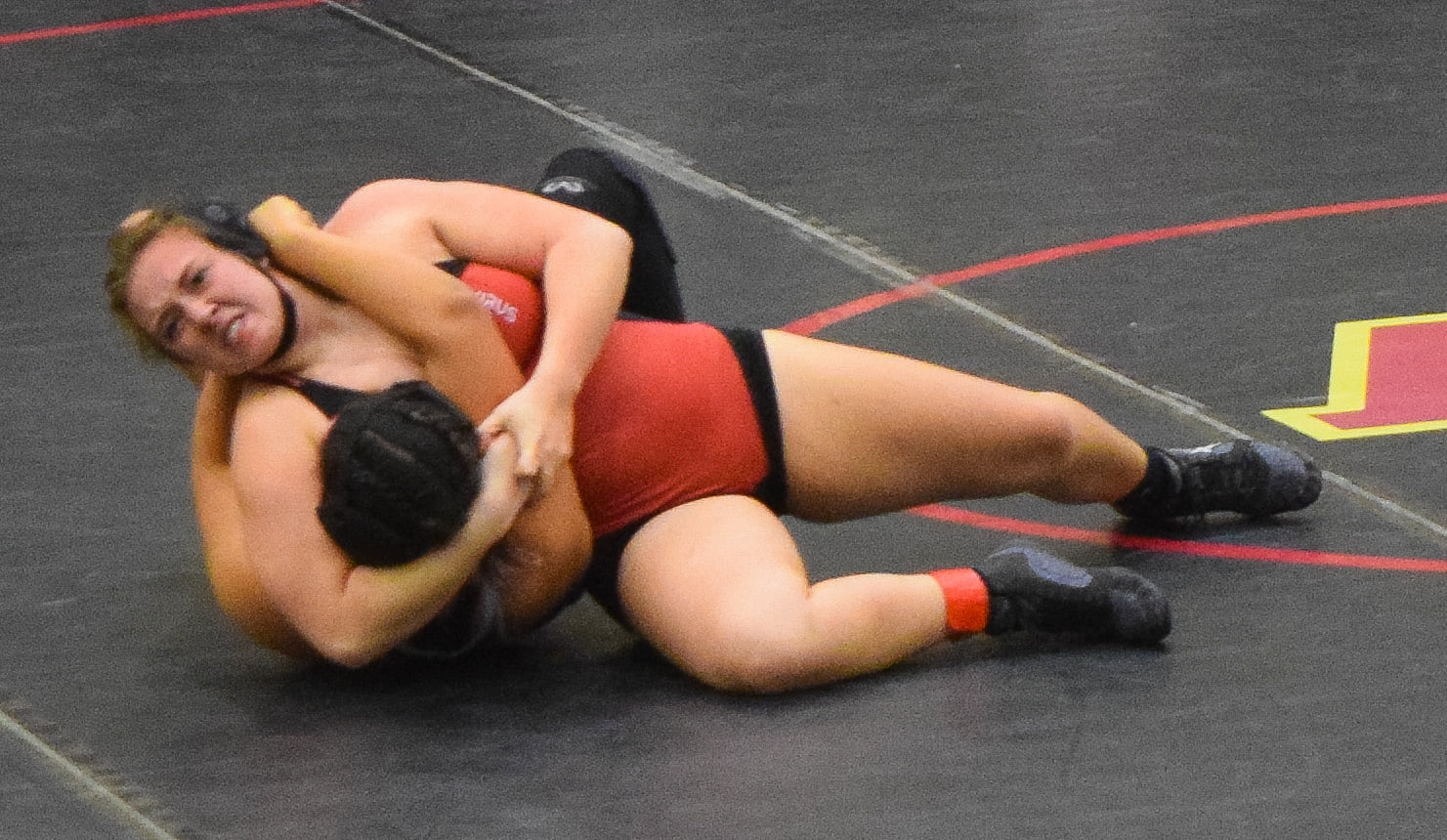Last month, Grand County High School tenth-grader Marek Relph competed in the first-ever Utah High School Activities Association-sponsored high school girls’ state wrestling championship.
Girls’ wrestling is the first new sport to be sanctioned under a new “emerging sports” evaluation process adopted by the UHSAA and Relph is the first girl from GCHS to compete in the sport. She and GCHS Athletics Director Ron Dolphin hope to expand the team next year and improve their standing in the state.
Relph faced three opponents at the Feb. 17 championship at Mountain View High School in Orem, Utah. One was a girl from a larger high school that Relph had faced before. Relph pinned her competitor.
“This one girl had beat me at another tournament, and then I came back at State and I beat her,” she said with pride.
Utah high schools are divided into classifications based on enrollment numbers, with the largest high schools classified as 6A and the smallest as 1A. Large schools might have over 3,000 students, while small schools may have under 200. Grand County High School is the smallest 3A school in the state with about 340 students in grades 10-12, the grades that are considered for UHSAA classification.
Usually, high school athletes compete within their own classifications. However, because girls’ wrestling is new and there are still relatively few participants state-wide, Relph ended up competing with athletes from 5A schools.
“In a lot of ways that was much more challenging and difficult for those girls,” Dolphin said of the championship, noting that larger schools have more resources. He’s been pushing to have GCHS moved to the 2A classification, based on its low participation—around 25% of the students participate in sports. Competing against larger schools can be disheartening for GCHS students, he said. However, he’s proud of their accomplishments as a 3A school, including Relph’s showing at the wrestling championship.
“The level of practice and competition is much more effective at the larger classifications,” Dolphin said. “That’s a pretty tough challenge and we’re really proud of her for taking that challenge and having some success at that tournament.”
Relph got interested in wrestling from watching her younger brother practice and compete in the sport. She enjoys physical activities and participates in other sports like tennis, swimming, and golf. She is drawn to sports that are more individual rather than team-focused.
Relph practices with the boys’ team at GCHS but faces other girls in competitions. She says she doesn’t have to make any adjustments in technique to accommodate that switch.
“I do the same things wrestling against girls as I do against boys,” she said.
Having seen through her first state championship, Relph has calibrated her high school goals.
“My main goal for next year is just to get more girls to be on [the team],” she said. “But by the time I’m a senior, I would like to be in the top three at state.”
Building the team is also a priority for Dolphin, who said he hopes to get eight to 10 girls in the program next year.
Relph said she’s trying to convince friends to join, but so far they’ve only promised to “think about it,” but Relph has a plan for promoting the team.
“Social media is the way I was thinking,” she said, “because everybody sees it, everybody has it. Also putting some posters around the school, just to get it in their minds.”
As another potential inspiration for girls, Relph mentioned an Olympic athlete she admires: Helen Maroulis, the first American woman to win an Olympic gold medal in freestyle wrestling. Videos available on Youtube document Maroulis’s wrestling career and philosophy.
“She’s probably the one that most girls would look up to,” said Relph.
The UHSAA was formed in 1927 and develops and organizes activities and sports for Utah high schools.
In 2017, Utah high schooler Sam Gordon and her father, Brent Gordon, sued the UHSAA for failing to provide a sanctioned Utah girls’ high school football league. Sam played on her high school’s boys’ football team, capturing national attention with Youtube videos of her impressive plays.
On March 1 of this year, a federal judge ruled against the Gordons, saying that there weren’t enough girls interested in football to justify sanctioning the sport.
However, the suit prompted the UHSAA to implement new procedures for gauging student interest in sports and deciding when a sport should be UHSAA sanctioned, opening access to more funding and resources.
Schools report participation numbers to the UHSAA. When 10% of UHSAA member schools have female participation in a non-sanctioned sport or 20% of member schools have co-ed or male participation in non-sanctioned sport, that activity will be considered an “emerging sport.”
When 30% of member schools have groups participating in an emerging sport, that activity will be considered for sanctioning.
The Board of Trustees voted to sanction girls’ wrestling for the 2020/2021 school year at their Nov. 21, 2019 meeting. Other emerging sports up for consideration included mountain biking, which declined to join UHSAA in favor of forming its own organization; competitive cheerleading, which asked for sanctioning to be delayed to allow for improved organization; and boys’ volleyball.
On March 8, International Women’s Day, the UHSAA posted a photo from the Girls’ Wrestling State Championship.
“From students, to parents, to coaches, we couldn’t be more fortunate (and proud) to have so many strong women in Utah. They make everything we do possible,” the caption reads.
Dolphin echoed that sense of pride in his remarks about Relph.
“Wrestling is something that’s very powerful for her and I hope that she can bring others along, and I’m going to do what I can to help that cause,” he said. “You can see the passion that she has—when she puts that headgear on, she’s focused. You can see when Marek’s ready to rumble.”




